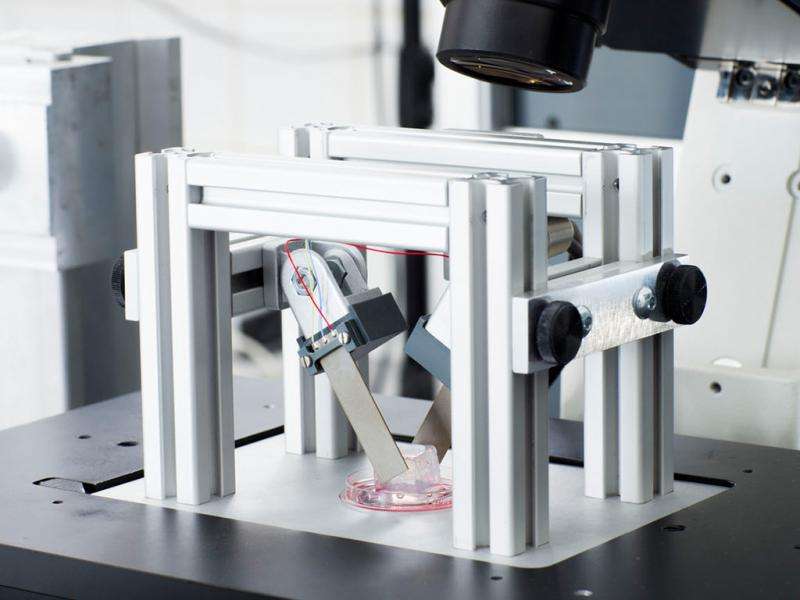Scientists develop a device for shaping cells while viewing under a microscope

Materials scientist Ljubomira Schmitt and biologist Tobias Meckel are developing a device that can be used to culture cells under induced movements whilst simultaneously allowing them to be observed through a microscope. The technology could improve drug testing and obviate the need for certain experiments on live animals.
The cells in our bodies are continuously in motion. Even when we're lying on the sofa, our hearts are pumping blood through our veins, our stomachs are kneading our recent meals through our systems, and our respiration is causing our chests to rise and fall. Whilst the muscle cells in these processes actively move themselves, those in our connective tissues are stretched and contracted passively. As Tobias Meckel, an associate professor in the Department of Biology and Head of Research into Membrane Dynamics, explains: "in this sense the only places where these processes are in abeyance are inside the bones and the brain".
Movement stimuli promote the development of the correct connections both between individual cells and the surrounding tissues, because they transmit important information to the cells about their position and orientation. Movement, whether active or passive, influences the development, growth and behaviour of cells. "If one cultivates undifferentiated heart muscle cells under a specific movement stimulus," Meckel explains, "they'll develop into functioning heart muscle tissue. In the absence of the stimulus, or if it is too strong, then connective tissue is formed." It is, therefore, remarkable that experiments on cells – which are indispensable in fundamental biological research as well as in the cosmetics, food, and pharmaceutical industries – are usually performed on static cell cultures.
It is true, as Meckel says, that biologists carrying out experiments on live cells pay meticulous attention to the composition of nutrient solutions, pH values and temperature. In addition, awareness of the fact that 3D cell cultures are better than the commonly used 2D cultures for simulating the processes taking place in our bodies is spreading steadily. Yet, most cell experiments still fail to take account of movement as a parameter. That could be about to change, thanks to an invention by Meckel and his colleague Ljubomira Schmitt. They are developing a device with which three-dimensional cell cultures can be exposed to controlled movement stimuli whilst simultaneously allowing them to be observed through a microscope.
Provided by Technische Universitat Darmstadt



















